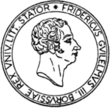Josef Albers, who was born in Bottrop in 1888, became one of the foremost representatives and pioneers of geometric constructivist art through his paintings and his teachings, in which he combined intuition with method in order to discover the foundations of artistic vision. He taught from 1920 onwards at the Bauhaus and from 1933 at the Black Mountain College of Yale University. In his studies Albers concentrated on the two essential components of painting: colour as optical energy potential on the one hand, and form and line for structuring space on the other.
Around 1950 Albers discovered some important points of departure for his studies of colour and form, one of which is embodied in his painting „New Version of ‘Indicated Solids’ of 1949“, which was recently acquired by the Arithmeum. The composition of this painting, which refers to an earlier work, served as a basis for structural studies („Transformations“, „Structural Constellations“), in which Albers tried out various spatial expressions of line and surface. During the following year he produced the first versions of the famous series „Homage to the Square“.
The composition of „Indicated Solids“, with its stringent reduction to shades of grey, is intrinsically more complex than the quiet quadratic colour variations of the series „Homage to the Square“. In the latter Albers kept working above all on the „Interaction of Color“, to which he dedicated an entire album, but in his structural studies he was mainly concerned with spatial artistic vision which also led him into the realm of sculpture from time to time.
The significance of the motif in „Indicated Solids“ for the oeuvre of Albers is borne out by its repeated reappearance, not only as this version in oil, but also in the collection „Formulation : Articulation“ (1972). Interestingly, Albers also used this motif in 1976 in his last series with the significant title „Never Before“, in which he varied the motif of the „Indicated Solids“ twelve times in colour and thus, in a way, returned to the colour studies of his „Homage to the Square“. In the series „Never Before“, towards the end of his life, the two elements colour and form reached a demonstrative balance and equilibrium.
In „Indicated Solids“, the angles in the middle of the painting suggest three dimensions, but the viewer’s eye moves along the parallel diagonals and discovers inconsistencies. What seems to be a perspective view turns out to be an optical illusion, which is further enhanced by the subtly placed shades of grey.
With this composition Albers succeeded in making the viewer conscious of an unusual form. The eye is attracted to familiar features, only to be trapped in an illusion. In order to fathom this surprising result, one studies the structure together with its colours. Thus, Albers achieves his goal, namely to lead the viewer unconsciously into being educated visually and becoming a little more conscious of artistic vision.






